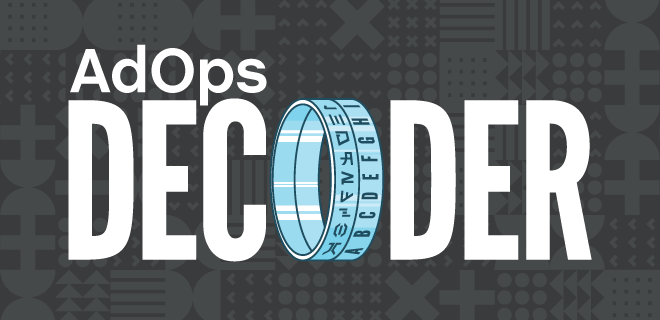
Leveraging first-party data is not a new concept within the ad tech industry, but the practice has become much more vital with each new privacy regulation regulating the collection, usage, and sharing of consumer data.
Sooner or later, third-party cookies will no longer be a viable tool to collect user data. The ethics around data accumulation are changing and the industry is working in overdrive to keep up with the times.
In November of 2021, Google Ad Manager (GAM) aimed to do just that. They launched Publisher Provided Identifiers (PPIDs) which are specific identifiers that publishers will apply to users based on their first-party data. First-party data is more privacy-focused than third-party data and this initiative was launched with that specific idea in mind.
The question begs, how will this benefit publishers under constantly evolving privacy regulations and big tech privacy updates?
What Is PPID?
According to Google Ad Manager, PPIDs are a unique identifier assigned by a publisher to a user. Publishers will share PPIDs with Google’s programmatic demand and this process will help them customize their ads, targeting, and advertising expertise.
In a statement at the launch of the product, Steve Swan, Product Manager, Google Ad Manager, said, “By helping publishers expand the use of their first-party identifiers to more transaction types, like the Open Auction, our partners will be able to show ads that are more relevant to their audiences, which will increase the value of their programmatic inventory.”
However, PPIDs are not actually data. They are identifiers related to a user visiting a publisher’s website.
When the consumer goes onto the website, publishers can share the user PPID with GAM so the ad serving platform can understand which specific ad requests originate from the same user despite cookies being restricted.
Essentially, the publisher can identify how many times the user logged into their site and what type of content they are consuming. This is how they are able to customize ads and create audience segments and audience solutions.
To set up PPID, the publisher creates a unique ID for users based on a first-party cookie or a login ID. Afterward, it will put that ID into GAM and choose who to share that data with. Google will hash that ID and pass it through to buyers for auction.
How Do PPIDs Benefit Publishers?
One of the main pulls for PPID is the commitment to protect consumer privacy.
The announcement emphasized that “advertisers who will be able to build segments off of the PPID data will not be able to see individualized information or user data. Because PPIDs are unique to each publisher, there is no way to match identifiers or create profiles across sites.”
Including the aforementioned benefits, PPIDs assist publishers with:
- Frequency Capping: This helps publishers identify the user even if they log in from different devices. This will support buyer frequency capping and interest-based ads personalization on programmatic traffic, thus creating a better user experience and potentially increasing publisher programmatic revenue. Publishers can also limit the ad views of a single user.
- Cross-Screen ID: The same ad will not be shown to the same consumer on different devices. PPID will identify the user and show personalized ads when appropriate.
- Audience Targeting: Using CDPs and DMPs, publishers can use stored data to create unique user profiles that can be pinpointed across devices. This creates personalized audience segments.
For instance, using Hulu as a practical example, Ad Tech Explained highlights how using PPID, the publisher can track user frequency to an individual ad across their website, app, or on CTV. Since the PPID is tied to a user login it ensures that the user will not see any one ad too many times.
When it comes to segmenting audiences, Hulu can create targets for their audience based on user credentials and how they interact with content on their platform. Using consumer credentials — including name, email, and billing address — publishers can determine household income and spending habits. From content consumption, they can determine whether a consumer is a sports fan or into the culinary arts, and personalize ads based on that information. All of this information will be added to that Unique identifier and audience segment.
PPID vs. ESP
In March of this year, Google launched another feature enabling publishers to activate their first-party data called Encrypted Signals for Publishers (ESPs). ESPs allow publishers to share encrypted first-party signals with buy-side platforms of their choosing.
While at first sight ESPs might look like PPIDs’ competition, both have been described as “two sides of the same coin.” Using first-party data, they each help publishers monetize programmatic inventory. Although, each tactic has a different function.
ESPs help publishers exchange encrypted information from GAM to non-Google buyers as all publishers and buyers do not work within Google’s ad tech ecosystem. While, as mentioned above, PPID communicates audience insights from GAM to other Google products.
Some say that ESP gives publishers more bang for their buck. With this function, experts say that publishers have more control over the data they choose to pass and to whom they decide to pass it. (With the caveat that it is encrypted before it enters GAM.)
Each concept is fairly new in practice through Google, but they both offer ways to navigate ad tech’s new world order.
Will one outweigh the other? Or will both sides of the coin work in tandem to help publishers thrive under new privacy regulations? Only time and putting the systems into practice will tell.